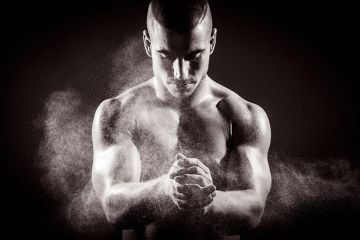5 DIY ideas for insane product photography


We believe the truth is somewhere in the center. With the right devices as well as some basic guideline, any individual can create terrific product shots. With these 5 basic product photography tips, you can develop high-grade product photos that will certainly help you transform visitors into paying customers (or whip the media into a craze when they see your shots in the Flaunter library!).
1. Take official product shots-- after that have some fun
When you're doing product photography, you should make the most of your time and have a good time. While you've got your cam, lighting as well as items all set, you ought to take a wide array of images.
Ensure to get the clean, basic shots that show your product from all angles. Get the front, the back and also the sides, as well as ensure to run in close for some information shots. These pictures can be important for the customer when they are considering a acquisition.
75% of customers rate the high quality of product pictures as ' essential' or ' extremely important' to their purchasing decision-- Upwork
2. Use personalized white balance
Have you ever taken a photo where the colours ended up extremely weird? Most likely, it was a white equilibrium issue. On the other hand, when you obtain white equilibrium just right, colours will certainly look completely natural. Proper white equilibrium is just one of the best methods to obtain a fantastic photo.
Almost every camera has Visit the website the ability to use different white balance setups. Most cams begin on an 'auto white equilibrium' mode, which (as the name implies) immediately analyzes the light in your scene as well as selects a appropriate setting ... the majority of the time.

If those don't function, you might be able to establish a custom white balance using the Kelvin scale. Most video cameras offer options from around 3,000 K ( extremely yellow) to 10,000 K ( really blue). You can try to establish this manually, yet the most effective means is to place a white notepad beside your product as well as rise close. After that make use of customized white equilibrium to establish your camera off that paper.
3. Focus on details
Getting premium product pictures is generally a rather taxing process, especially if you don't have a specialized workshop setup. Whatever setup you have, make the effort to do the job right.
Make the effort to perfect the illumination, get the background precisely right, choose the optimal angle and also locate the optimum colour settings to nail your image. It'll spend some time, yet it'll repay when you don't have to do much modifying of your pictures and when your customers start considering those photos.
Some things to watch out for:
• Dust, fingerprints, or smudges on your items or backgrounds
• Stray things in the corner of the picture• Not focusing the lens effectively on the subject
• Electronic camera shake and also vibration• Low light degrees ( resulting in high ISO, slow shutter rate as well as bad image high quality).
• Lacking batteries or flash memory card in the middle of the shoot.
4. Use reflections
One wonderful means to produce unique, attractive product shots is to use representations. Reflections produce a feeling of deepness as well as complexity in an image. There are a couple of methods to create reflections in a residence workshop.
A mirror. See to it it's extensively cleaned up (with non-streaking cleaner), then put your product ahead for a clean representation. Shoot from a reduced angle, almost parallel with the mirror, for best effect.
Aluminum foil. Peel a big sheet off a roll of standard cooking foil, being careful to maintain it as level as feasible, then position it the same as a mirror. Be careful to keep the ragged edges out of the photo.Water. Either location a thin layer of water in a tray and place your product there, or just put some water on a flat surface area.
This technique normally functions best when you utilize a backdrop like construction paper or sheets to manage the history-- or when you have a pure white room-- given that you will not want a representation of your ceiling fan on your business page.
5. Light the background, not just the product
Even a beginner product professional photographer will determine that a product requires to be lit correctly forever photos. Yet lighting the background is not user-friendly. Believe it or otherwise, lighting your backgrounds can significantly raise the high quality of your product shots.
Illumination the background has 2 positives. First, if you're planning to eliminate the background from your images (or intending to have Pixc do it for you), a intense, tidy history makes this process very easy and supplies the very best outcomes.
Also as a newbie photographer, utilizing these five tips, you should be able to generate some great images for your products as well as reap the benefits today.